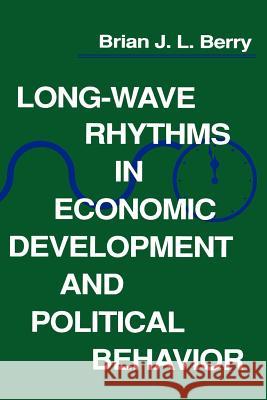Long-Wave Rhythms in Economic Development and Political Behavior » książka
Long-Wave Rhythms in Economic Development and Political Behavior
ISBN-13: 9780801840364 / Angielski / Miękka / 1991 / 256 str.
Is economic development a "random walk" or do underlying rhythms and cycles make it possible to anticipate long-term trends? Many social scientists have rejected the notion of long-term periodicity in economic trends. Now, after extensive analysis of economic data, distinguished scholar Brian J. L. Berry has found new evidence for the reliability-- and the value-- of "long-wave" theory. In "Long-Wave Rhythms in Economic Development and Political Bahavior," Berry argues that the synchronization of long waves and growth cycles is "more than a figment of some overactive imagination." Presenting his findings graphically, he argues that there is persuasive evidence of the existence of "deterministic chaos." Applying his analysis of rates of change to the economic phenomena of prices (Kondratiev cycles) and growth (Kuznets cycles), he discovers that pairs of 25-year growth cycles are embedded within 55-year long waves. As a result, Berry concludes, two different kinds of growth cycles-- one inflationary and the other deflationary-- form a complementary pattern of alternating crises with stagflation and depression. Berry also explores the "shifting sand" of cyclical phenomena in the stock market, voting behavior, the incidence of wars, the rise and fall of great powers, and mass psychologies. While avoiding dogmatic conclusions, he offers a provocative discussion of the long-wave context of social phenomena. As he examines the American economy in long-wave context, Berry optimistically asserts that the "bust" is not inevitable. Technological advances in information transfer enable leaders and organizations to anticipate and alleviate the adverse effects of economic cycles. "Like it or not," he writes, "our lives appear to be embedded in a higher order of complexity: collectively, we are a societal organism that displays self-regulating fluctuations around a path of growth."











